
Component choice and balance



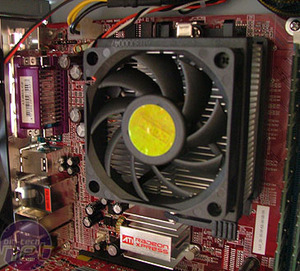
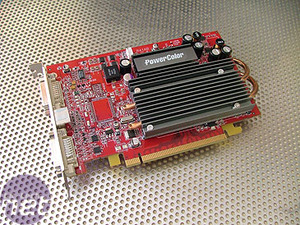
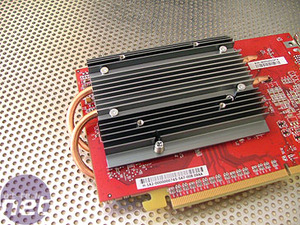
Memory-wise, the 1GB of DDR is no-name stuff, and we're disappointed not to see an enthusiast brand in there - even Corsair Value would perhaps be better than this. With that said, decent overclocking memory can be incredibly expensive, and the use of this generic stuff won't greatly affect your gaming experience unless you intend to clock the heck out of the CPU. Memory is also one of the easiest things to upgrade at a later date.
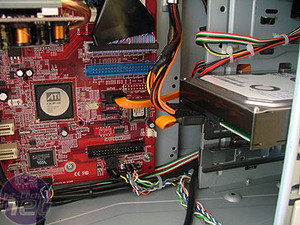
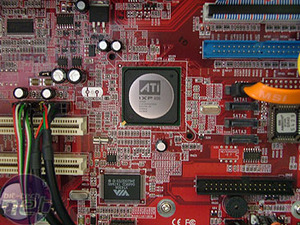
In terms of balance, the system is well thought out. The RX480 motherboard is a good pairing with the X700, and the 3500+ CPU is just on the right side of reasonable. Whilst the memory could perhaps do with a bit of an upgrade, overall, there are no outrageous bottlenecks, a problem we often find with off-the-shelf systems that concetrate on how good a specification sounds rather than performs.
Pricing and upgradability
Let's tot up the cost of the components off the shelf, and compare to the overall cost of the system.Powercolor silent X700: £102
Athlon 64 3500+: £190
Powercolor RX480 motherboard: not sold at retail, but around £80 equivalent
1GB generic memory: around £60
Maxtor hard drive: £68
Sony DVD drive: around £40
Coolermaster Centurion case: £40
Hiper PSU: £35
Total cost: £615
Of course, on top of that, you have the cost of fully-licensed copy of Windows XP Home, as well as fans, the Akasa fan controller, heatsinks, wireless keyboard and mouse, bits of software (like Roxio burning) as well as a year's warranty. Overall, we'd say the system is good value for money.
In terms of upgradability, there are a few points to note. Number one is that with the x16 PCI Express interface on the motherboard, you'll be able to use any graphics card you can think of over the next couple of years. There's a plethora of SATA ports, so more storage is easy to add.
Perhaps the one minor annoyance is that the Hiper PSU doesn't have any PCI Express power connectors, meaning you'll need to get a molex converter if you intend to add in a card that requires the additional power.
The Centurion chassis is a good choice, because there are plenty of drive bays, and installation is roomy. It looks the part, and the cooling is plenty adequate to accomodate hotter, faster components.

MSI MPG Velox 100R Chassis Review
October 14 2021 | 15:04





Want to comment? Please log in.